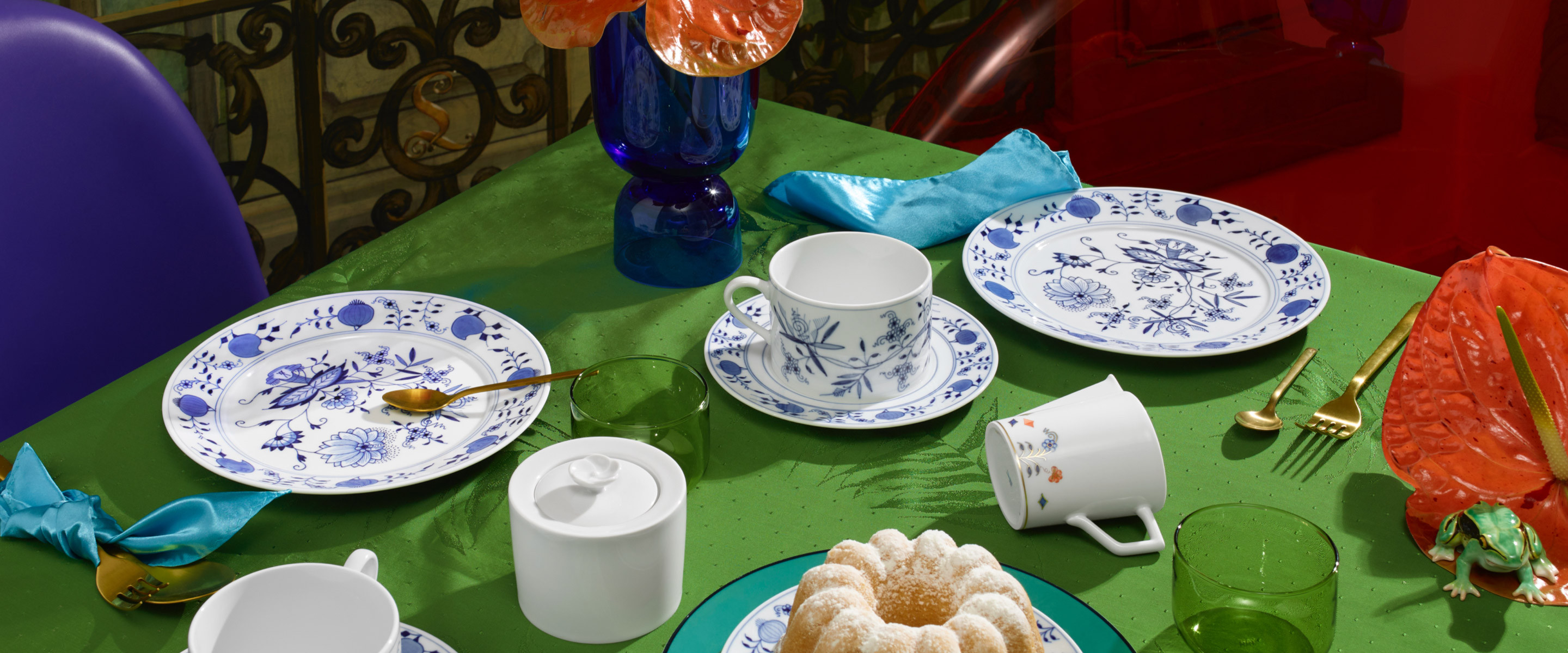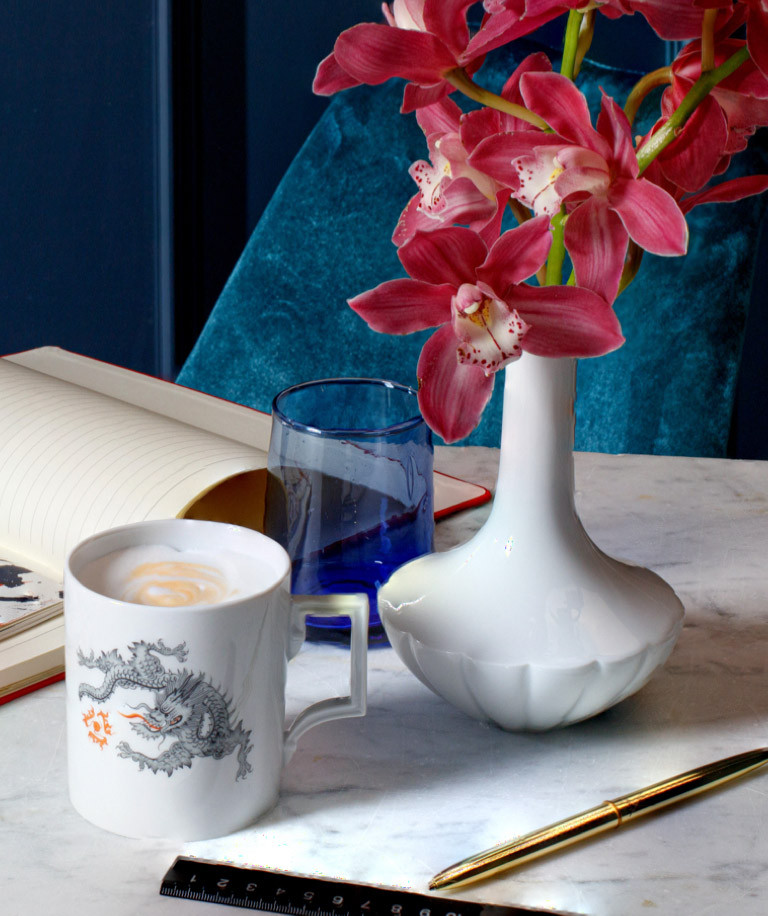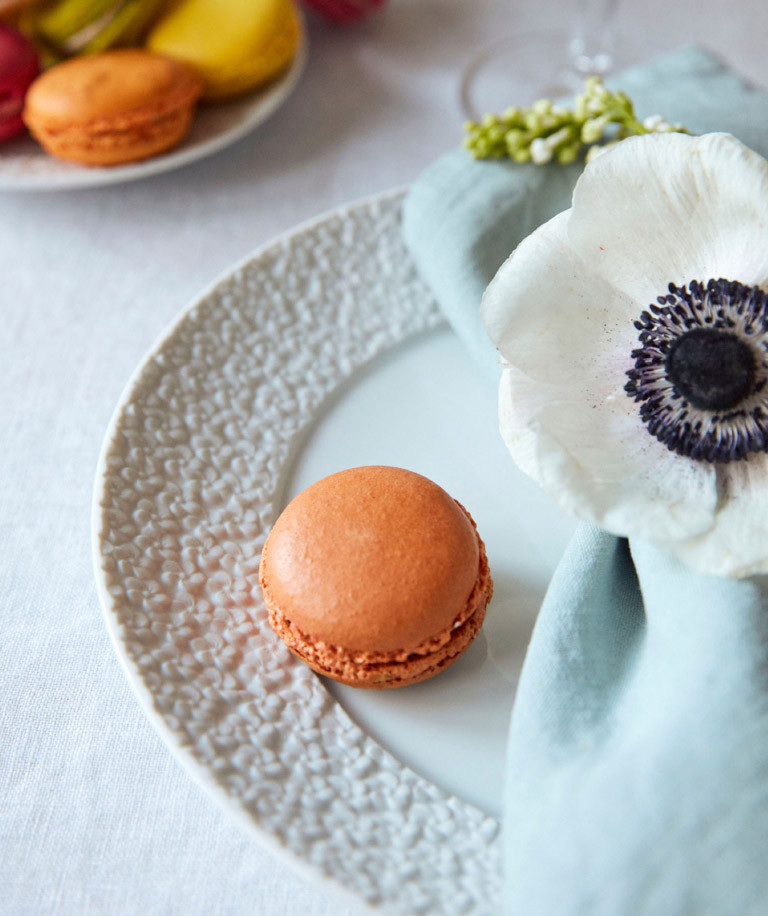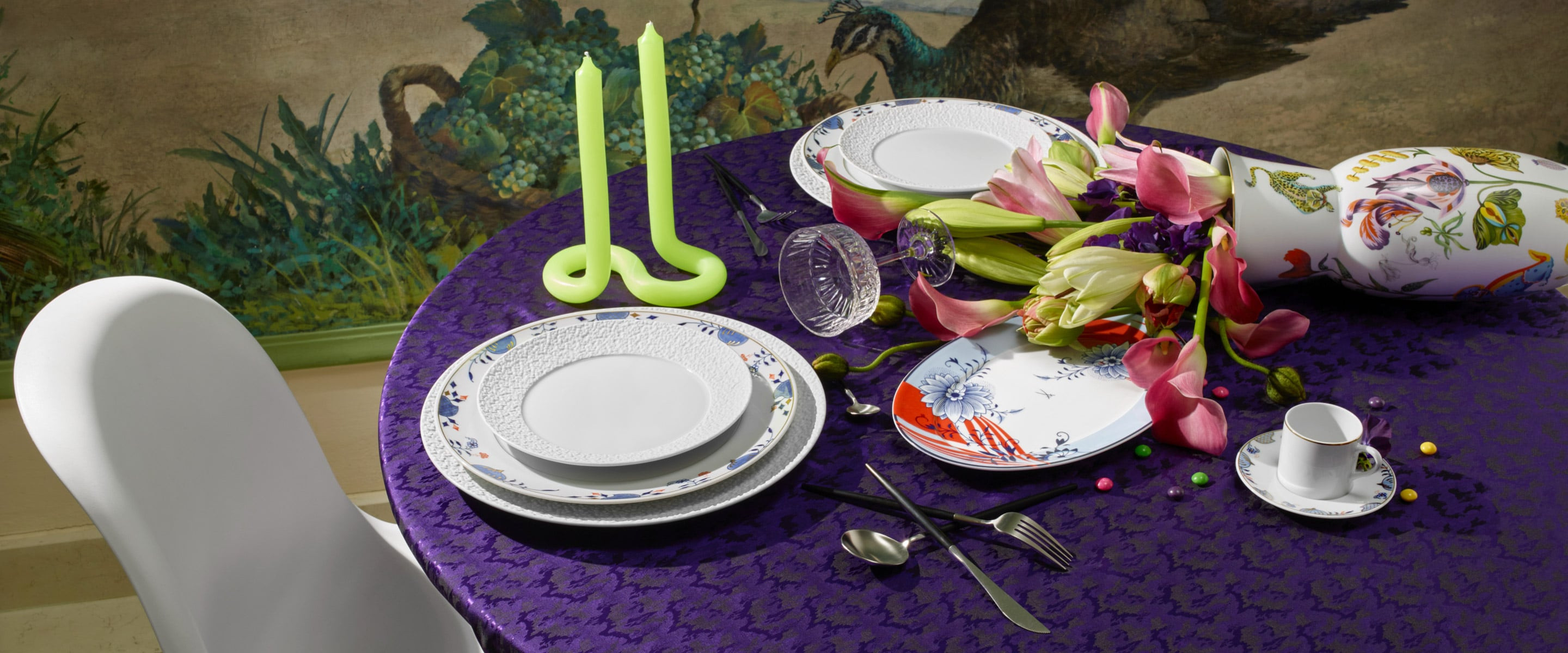
MEISSEN "N°41" –
Timeless design and refined craftsmanship
Timeless design and refined craftsmanship
-
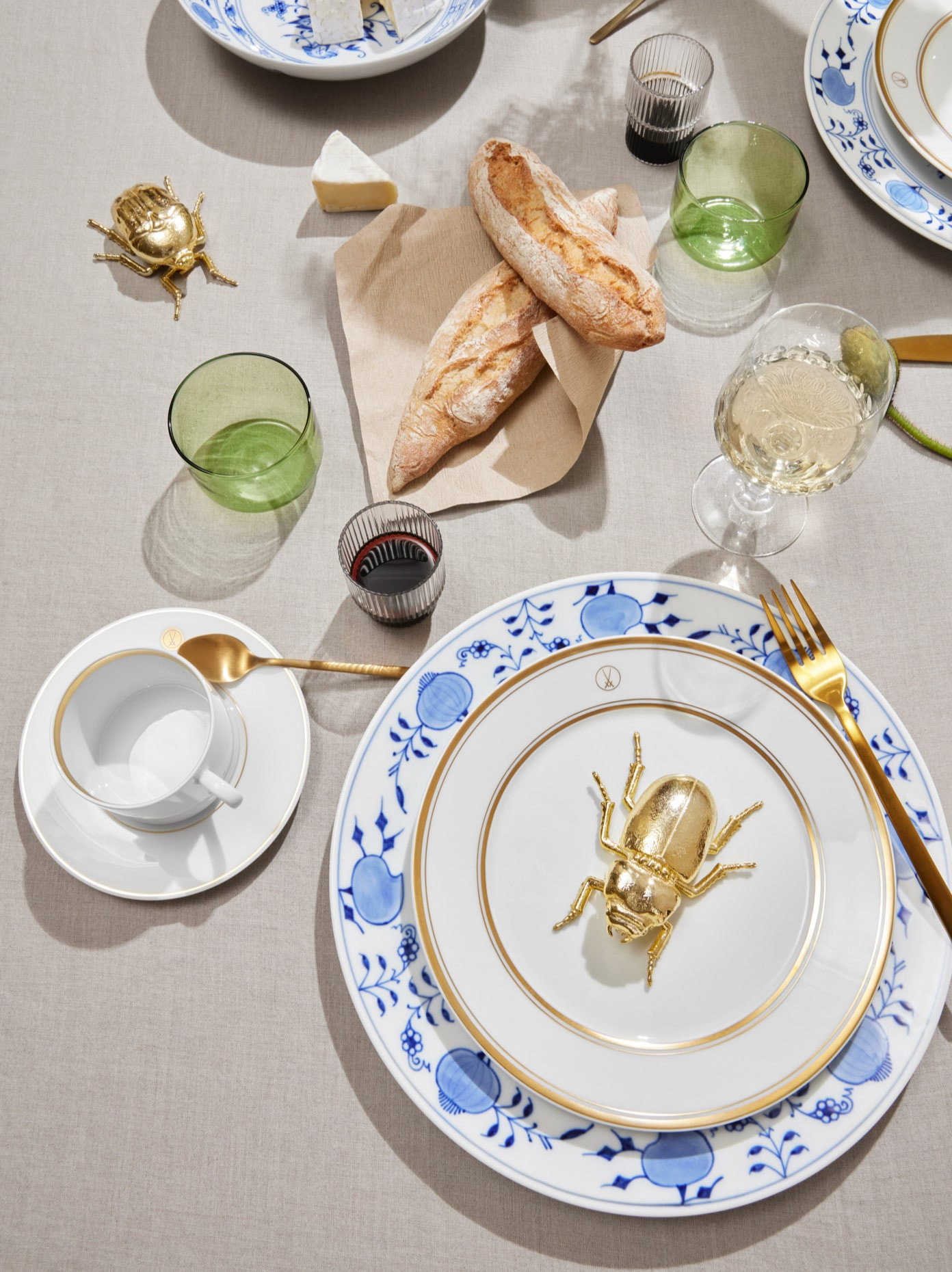 Since its debut in 2017, the "N°41" collection has been a standout of timeless, sleek design and one that marries Meissen porcelain quality with modern forms and silhouettes. Its hallmarks – straight lines and minimalist elegance – provide the perfect canvas for three extraordinary patterns: "Royal Blossom" uniquely reinterprets Meissen’s iconic “Snowball Blossoms” as a relief, lending the clear shapes an exciting tactile quality and stylish intricacy. "Noble Blue" is dedicated to Meissen’s famous "Onion Pattern", rearranging it to great effect, while “Swords” draws on a prominent element from the Electorate of Saxony’s coat of arms, which has rose to fame as the manufactory’s trademark since 1722, the crossed swords, arranging them for the first time as a decorative pattern in its own right.
Since its debut in 2017, the "N°41" collection has been a standout of timeless, sleek design and one that marries Meissen porcelain quality with modern forms and silhouettes. Its hallmarks – straight lines and minimalist elegance – provide the perfect canvas for three extraordinary patterns: "Royal Blossom" uniquely reinterprets Meissen’s iconic “Snowball Blossoms” as a relief, lending the clear shapes an exciting tactile quality and stylish intricacy. "Noble Blue" is dedicated to Meissen’s famous "Onion Pattern", rearranging it to great effect, while “Swords” draws on a prominent element from the Electorate of Saxony’s coat of arms, which has rose to fame as the manufactory’s trademark since 1722, the crossed swords, arranging them for the first time as a decorative pattern in its own right.
Given “N°41’s” immense popularity, MEISSEN is now expanding these decor variants to include further porcelain objects. From new bowls, mugs, vases or egg cups to “Royal Blossom’s” bisque variant – each addition and ongoing development allows you to bring a sense of modern opulence to your dining table and home interior.
Meissen’s "Onion Pattern" was created in 1731 and remains the most successful blue pattern in the history of porcelain. With "Noble Blue", its elements – peaches and melons on the rim of the plate as well as bamboo stalks and the delicate chrysanthemum blossoms in the centre – are taken up and rearranged for the first time ever. An undertaking that demands the utmost precision and care on the part of Meissen’s artisans. First, the manufactory's proprietary cobalt blue is applied to the unglazed porcelain in a process known as underglaze painting. The porous material immediately absorbs the paint, making any corrections impossible. Details in bright red and radiant gold are also applied by hand but only after glazing and the subsequent gloss firing. When fired again, these special inglaze paints sink into the glaze and are thus protected by it.
For the first time in Meissen’s history, the venerated “Onion Pattern” now graces a new tableware collection, giving the famous pattern a completely new stage on which to enthral audiences. The modern “N°41” series thus invites you to mix and match its pieces with other porcelain items.
"The decorative patterns featured on "N°41" are new breathtaking interpretations of iconic Meissen décors and an expression of the living, breathing artisanal perfection at MEISSEN."
-
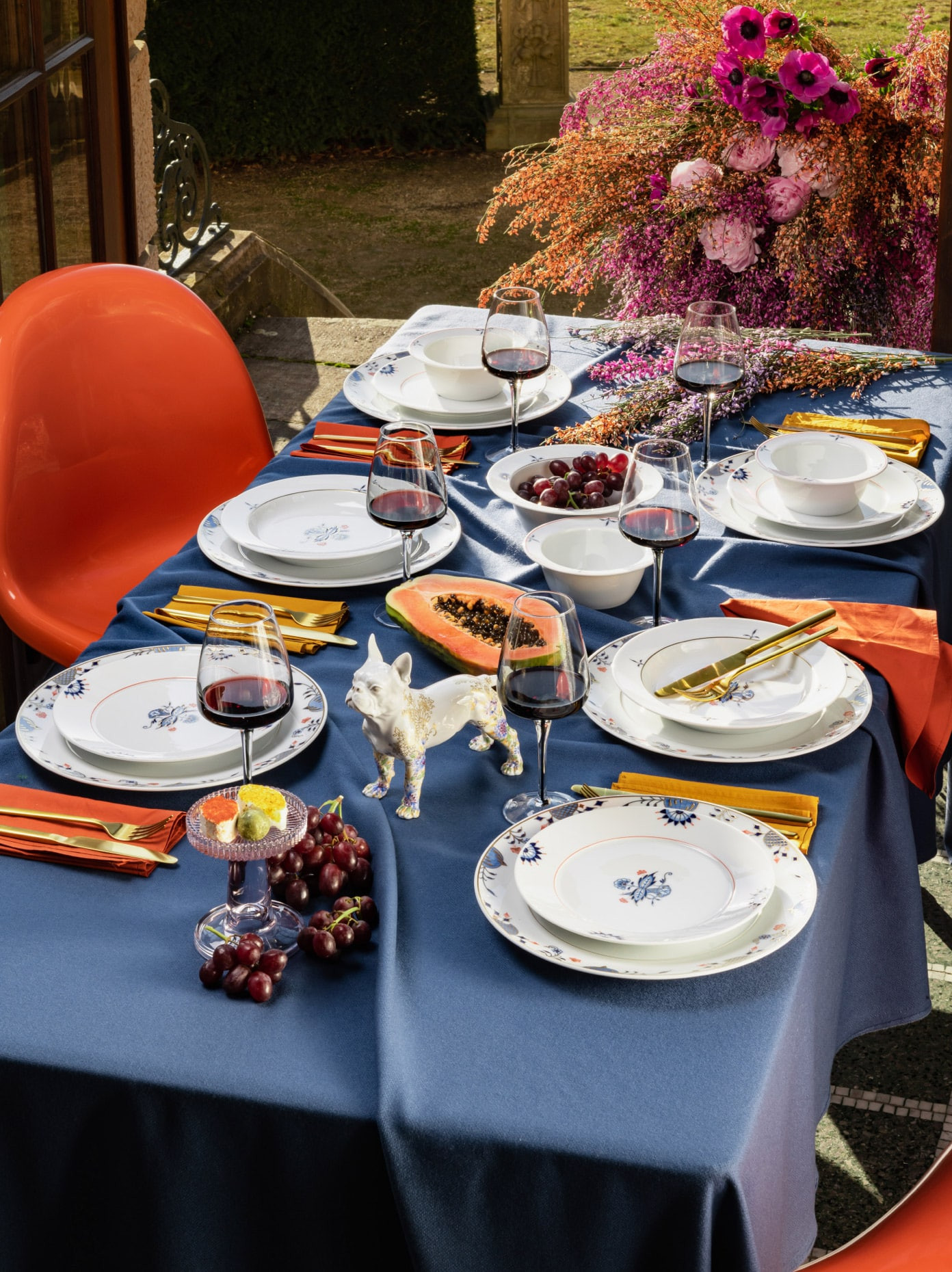 For the first time, the Crossed Swords have been reinterpreted as an independent pattern and take centre stage on the "N°41" tableware series – in radiant yellow gold, depicted individually or combined in various sizes, the pattern lends the purist tableware a very distinctive radiance and a touch of modern opulence. Since 1722, the crossed swords – taken from the coat of arms of the Electorate of Saxony – have stood for the unsurpassed quality of Meissen porcelain the world over. While the trademark has undergone slight changes over the centuries, it is still applied by hand to every piece of Meissen porcelain in the manufactory's own cobalt blue by Meissen’s “swordsmen” – painters who specialise in the Crossed Swords.
For the first time, the Crossed Swords have been reinterpreted as an independent pattern and take centre stage on the "N°41" tableware series – in radiant yellow gold, depicted individually or combined in various sizes, the pattern lends the purist tableware a very distinctive radiance and a touch of modern opulence. Since 1722, the crossed swords – taken from the coat of arms of the Electorate of Saxony – have stood for the unsurpassed quality of Meissen porcelain the world over. While the trademark has undergone slight changes over the centuries, it is still applied by hand to every piece of Meissen porcelain in the manufactory's own cobalt blue by Meissen’s “swordsmen” – painters who specialise in the Crossed Swords.
The exuberant variety and richness of flora and fauna have always played a major role in the manufactory's repertoire. Since the middle of the 19th century, naturalistic flower painting has matured to perfection as a genre in its own right at MEISSEN. It is expressed in decorative patterns as well as stylised flower paintings on porcelain, gracing tableware and dining objects, vases and accessories. Painting aside, floral motifs can also be found in the moulding department, modelled in rich detail as lavish sculptural features and intricate appliqués, such as the iconic “Snowball Blossom” décor, created in 1739 by Johann Joachim Kaendler at the behest of King Augusts III. For the “Royal Blossom” series, the venerable blossoms have been reinterpreted for the first time ever as a delicate relief gracing the sleek silhouettes of the “N°41" series.
